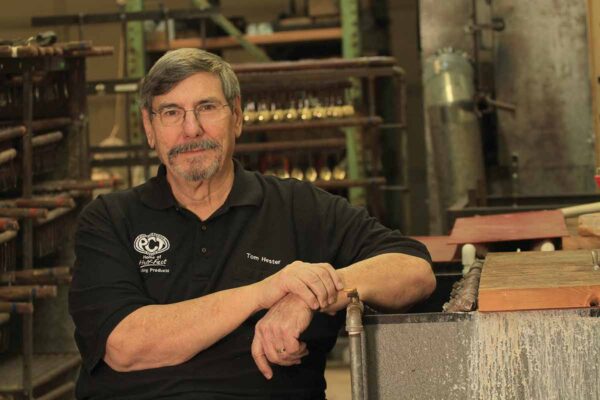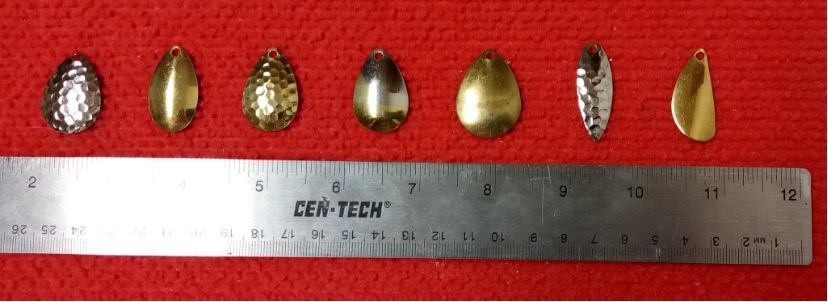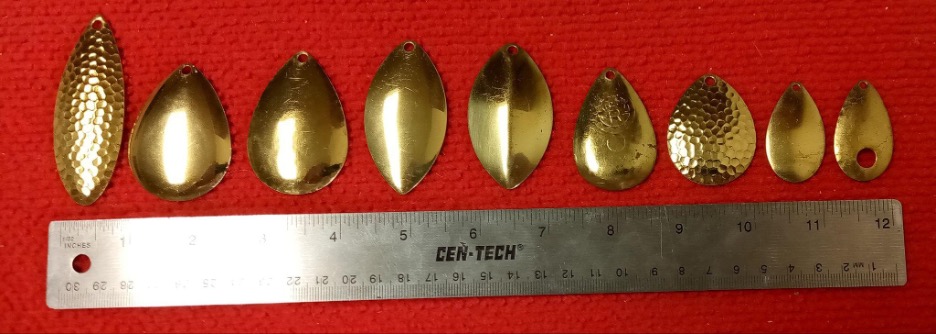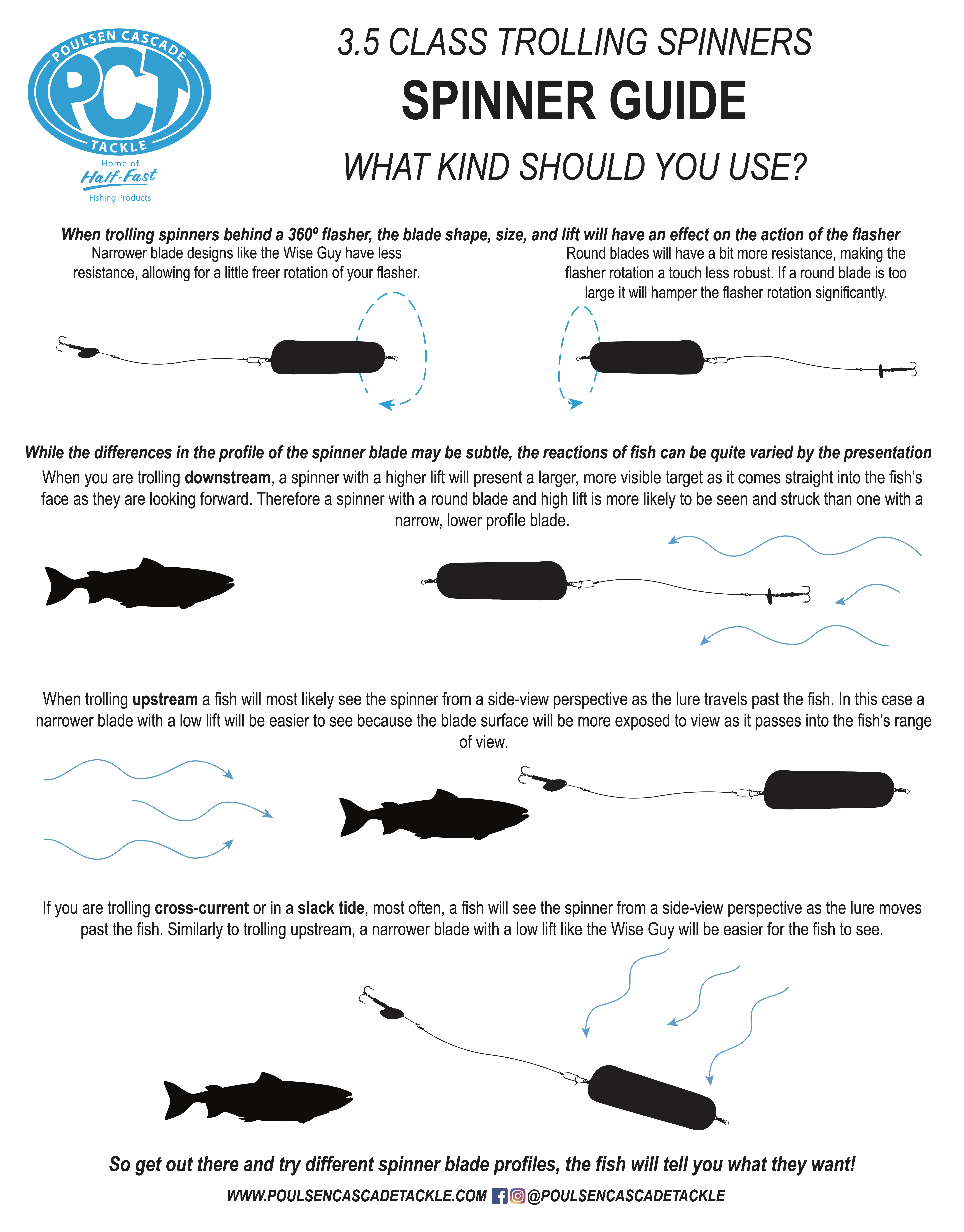The Truth About 3.5 Spinners and Blades
How Spinner Blades Get Their Sizing
By Tom Hester

As a spinners and spinner blades manufacturer, we are often asked for a particular spinner blade size.
You would think that such questions would be simple to answer.
But rarely can they be answered without a lot of discussion.
Typically, these questions are posed as:
-
-
- “What colors do you have in a 3.5 blade?”
- “What colors do you offer?”
- “Do you offer a size 6 blade in Denver Bronco?”
-
If those sound like the questions you might ask, you’re not alone. We hear them all the time, especially at trade shows.
-
-
- So why don’t we just answer them straight up?
- How hard can it be?
- After all, a size 6 is a size 6, and a size 3.5 is a 3.5, right?
-
Wrong!
-
-
- The problem is that every blade style has its own size scale.
- There is no universal spinner blade sizing chart. Each blade design was given its size range by its designer.
- To add to that confusion, manufacturers may size the same blade style differently.
-
For example, Cascade-style blades made by us, Poulsen Cascade Tackle, vary in actual dimensions and specific sizes compared to other manufacturers.
To confuse matters more, they may even have different family names.
What we call a “Cascade” style blade (incidentally, that’s the namesake of our brand) might be called something such as ‘Mag Willow’ or ‘Olympic’ by other manufacturers.
Even the well-known Colorado-style blades can vary in sizing by different manufacturers.
Let’s look at some examples that might help you understand this.
Here, we see a collection of spinner blades that one might argue are of similar sizes.
The first blade is a 3.5 Colorado-style.
Can you guess the sizes of the remaining blades in this grouping?

If you guessed 3.5 or something close, you’d be incorrect.
In fact, none of the rest are 3.5s. We flipped them all over so you could see, written in Sharpie pen, the actual sizes of each of these spinner blades.

The blades in this collection are as follows, from left to right:
-
-
- # 3.5 Colorado
- # 4 Indiana
- # 1 Bear Valley
- # 1/0 Bear Valley
- # 2 Backmore
- # 3 Willow
- # G Prop
-
Now, look at this collection of blades.
What do they all have in common?

Every one of them is a size 6! That’s because each style has its own sizing scale.
The blades in this collection are:
-
-
- # 6 Tidewater
- # 6 Backmore
- # 6 Bear Valley
- # 6 Wisdom
- # 6 Cascade
- # 6 Lucky “R”
- # 6 Chinook
- # 6 CV
- # 6 CV Vortex
-
The sizes of spinner blades need to be considered in terms of length and width at the widest point of the blade. There is no other way to compare for size.
Size should not be the only factor when choosing a spinner or spinner blade. It’s essential to know how it will appear to a fish.
Along with length and width, the shape and contour also contribute to determining how a blade style will behave in the water.
The combination of these factors affects
-
-
- How much drag will be exerted by the spinner
- The degree of lift, or angle of the spinning blade in relation to its shaft
- How easily the blade will start spinning
- What perspectives offer the highest visibility
-
These qualities are essential when trolling behind a 360 flasher.
Size, shape, and dish contour all affect the degree to which a spinner will interfere with the rotation of your flasher.
If a blade is too large and has a too wide profile, it will dampen the flasher’s action. It can even stop it from rotating at all.
On the other hand, if a blade has a narrow profile with a relatively shallow dish contour, it will have less draft and, therefore, less drag.
That combination allows for a 360 flasher to function properly, even though the blade is longer and more significant than a traditional 3.5 Colorado.
>>> Check out the following article & illustration
3.5 Class Trolling Spinners – What Kind Should You Use?
One more thing to consider when choosing a spinner blade is the direction of presentation.
When trolling downstream, chances are you will be presenting your offering directly toward the face of the fish.
In such cases, a blade with a lot of lift, such as a Baby Back, will have the highest visibility.
If trolling upstream, less lift is desirable because fish will view it mainly from the side. With less lift, you can have a larger blade, like a Wise Guy, thus increasing visibility.
To see a couple of examples of how this looks in tow behind a 360 flasher
click on these short video clips:
Now that you know there is more to choosing a spinner blade than the stated size, you should be able to select the best one for your purposes.
The sizes stated for any blade are only relevant to that particular style. Shape and dish contour are equally important factors.
Poulsen Cascade Tackle, based in the Pacific Northwest, specializes in crafting high-quality tackle solutions tailored to the needs of dedicated anglers. Renowned for innovative designs, exceptional craftsmanship, and the use of premium materials, the company is a trusted name in the fishing community.
We invite you to Share Your Thoughts and Questions. Please Submit Your Comments.

